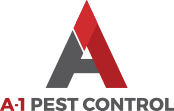
How Long Do House Flies Live?
How long do house flies live? You're likely wondering that if you've noticed these uninvited visitors suddenly appear indoors. To successfully get rid of house flies when they invade, it can help to understand them, from their habits and tastes to their lifespans.
In this guide, we’ll take a closer look at the answer to the question, “How long do houseflies live,” and give you some important insights for dealing with these unwanted guests.

Table of Contents
How Long Do House Flies Live?
If suddenly there are swarms of flies in your home, you're likely wondering if the problem will correct itself or if you need to take further action. So, how long do house flies live?
The lifespan of a house fly depends on factors like temperature, humidity, and the availability of food. On average, though, a house fly lives between 15 and 30 days. Their life cycle consists of four stages: egg, larva, pupa, and adult, with the adult phase being the longest.
The Life Stages of House Flies
If you’re searching, “How long do house flies live," chances are you’re dealing with some in your space. In those cases, it may be even more helpful to take a close look at their life stages, to get a better idea of how quickly they reproduce—and why you’ll need to tackle the issue ASAP.
1. Egg Stage
The life cycle of a house fly starts with the egg stage. Adult female house flies lay clusters of small, oval-shaped eggs in decaying organic matter like garbage, animal waste, or food scraps.
They can also lay a substantial number of eggs throughout their relatively short lifespan. On average, a single female house fly can lay anywhere from about 75 to 150 eggs in a batch. Over the course of her life, she will lay multiple batches of eggs. These eggs, usually numbering in the hundreds per female, hatch within a remarkably short period—typically 12 to 24 hours.
2. Larva (Maggot) Stage
Once the eggs hatch, the larva stage begins. Flies in this stage are commonly known as maggots, and they are voracious feeders, thriving on the matter where the eggs were laid.
This stage lasts 3 to 5 days, during which the maggots undergo several molts as they feed and grow.
3. Pupa Stage
After the larval stage, maggots transform into pupae, marking a phase of metamorphosis. Encased in a hard shell—like a cocoon—pupae are safe to grow, developing legs and wings as they prepare for adulthood. The pupal stage typically lasts 3 to 6 days, though environmental factors like temperature can have a big impact on this.
4. Adult Stage
The fully developed adult house fly emerges from the pupal case, ready to start its buzzing, airborne, adult life. This stage lasts 15 to 30 days, with warmer temperatures accelerating the development process.
What Factors Affect How Long House Flies Live
In answering, "How long do house flies live," we need to also cover what can prolong or prevent flies from a longer life. There are a few factors that can impact the life span of a house fly, and some can give us some insight into how to clear them out of your space.
1. Temperature
Temperature is a critical factor that directly influences how quickly flies develop. Warmer temperatures generally accelerate the life cycle of flies, including the adult stage. Flies develop more quickly in higher temperatures, and their metabolic processes, such as feeding, reproduction, and overall activity, are heightened in warmer conditions.
2. Humidity
Humidity levels also play a role in the development of flies. Flies thrive in environments with higher humidity, which can contribute to a shorter duration in the adult stage. On the other hand, low humidity can slow down the development of flies.
3. Availability of Food
Just as with any organism, the availability of food sources is crucial for a flies' development. A diet rich in nutrients provides the necessary energy for mating, egg-laying, and overall survival. Flies with access to abundant food may have a shorter adult stage compared to those facing food scarcity.
4. Genetics
The species and genetic characteristics of a house fly can influence the duration of the adult stage. Different fly species may have varying life cycle durations, and individual variations within a species can also impact the time spent in the adult stage.
5. Predation and Environmental Threats
The presence of natural predators, such as spiders, birds, or other insects, can pose a threat to adult flies. Flies might even change their behavior and life cycle in response to those pressures, potentially affecting the duration of the adult stage.
6. Home Pest Control Services
If your house has recently been treated with professional home pest control services, or you're on a routine pest control plan, you are less likely to encounter these frequent fliers. An exterminator will have the tools and the knowledge about how to treat your home for house flies, gnats, and other pests.
However, if you're leaving food sitting out in your home, aren't cleaning out your garbage disposal, have rotting food in your fridge, or aren't properly disposing of your garbage, you'll likely start seeing bugs indoors - no matter how great the level of pest services.
House Flies vs. Gnats
When they’re buzzing around your kitchen, you’re probably not thinking too much about the nuances that differentiate a house fly from a gnat. Knowing the difference, though, can make it easier to find the right pest control solutions.
Appearance
Adult house flies are typically about 5 to 8 millimeters in length, and they have a grayish or dull color with four dark stripes on their thorax. Gnats are usually smaller, with tiny, slender bodies with long legs.
Behavior and Habitat
House flies are pretty predictable: They are attracted to decaying organic matter, garbage, and food waste, which means they are commonly found around spaces used by people. Gnats, on the other hand, are attracted to a variety of habitats depending on their species. Fungus gnats, for example, are often found in damp soil where they lay their eggs. Other gnats might be drawn to wetlands, forests, or bodies of water.
Life Cycle
Gnats and house flies have similar life cycles. Both include the egg stage, larva stage, pupa stage, and adult stages. Both of them reproduce quickly, and tend to live between 15 and 30 days once they reach adulthood.
How Long Do Gnats Live?
The lifespan of gnats can vary depending on the species and environmental conditions. Generally, the life cycle of gnats consists of four stages: egg, larva, pupa, and adult. The egg stage typically lasts a few days, followed by the larval stage, which can range from a couple of weeks to several months, depending on temperature and food availability. The pupal stage is relatively short, lasting just a few days, before emerging into the adult stage. In optimal conditions, the entire life cycle can be completed in a matter of weeks.
House Flies v. Fruit Flies
These two are commonly confused for one another, but they do have some important differences.
Appearance
Adult house flies are typically larger than fruit flies, measuring around 5 to 8 millimeters compared to the fruit flies 2 to 4. House flies are also a bit darker and grayish in color, while fruit flies tend to have a tan to brownish-yellow color.
Habitat and Behavior
While house flies are attracted to decaying organic matter, garbage, and food waste, fruit flies are a bit more discerning. They are only drawn to ripe or decaying fruits and vegetables, as well as fermenting liquids. You’ll most likely find them near fruit bowls, garbage bins, and areas with organic debris.
Life Cycle
Fruit flies have a life cycle that mirrors that of a house fly, including the egg, larva, pupa and adult stages. The length is usually a lot shorter though, lasting around 8 to 10 days.
How Long Do Fruit Flies Live?
The lifespan of fruit flies, as we mentioned, is typically from 8 to 10 days long. This brief life cycle consists of four stages: egg, larva, pupa, and adult. After mating, female fruit flies lay their eggs on the surface of ripe or decaying fruits, vegetables, and other organic materials. The eggs hatch into larvae, commonly known as maggots, which feed on the food. The larvae then pupate in a protected location before emerging as fully developed adult fruit flies. The entire life cycle can occur quickly under favorable conditions, but can be sped up or slowed down by outside factors like temperature and humidity.
Managing House Fly Infestations
How long do house flies live? That depends on the breeding grounds that you're sustaining for them. But house flies can be more than just annoying—they can also pose potential health risks. Effective management of house fly infestations involves a combination of preventive measures, sanitation practices, and targeted pest control strategies.
1. Sanitation
The first line of defense against house fly infestations is maintaining a clean and sanitary environment. Dispose of garbage regularly, ensuring that trash bins have tight-fitting lids. Clean up food spills promptly, and avoid leaving uncovered food items exposed.
2. Eliminate Breeding Sites
House flies breed in decaying organic matter, such as food waste and compost. Regularly clean up pet waste, fix leaky faucets, and ensure that compost piles are properly managed. By getting rid of these sites, you can disrupt the reproductive cycle of house flies.
3. Screening and Sealing Entry Points
Prevent house flies from entering your home by installing screens on windows and doors. Check for and repair any gaps or cracks in doors and windows that may serve as entry points for flies.
4. Natural Predators
Encourage natural predators such as spiders, birds, and predatory insects to help control house fly populations. Birds, in particular, are known to feed on adult flies, contributing to natural pest control.
5. Use Essential Oils
Certain essential oils, such as eucalyptus, citronella, and mint, are known to repel house flies. Create a natural fly repellent by mixing these oils with water and spraying it around the home. This provides a non-toxic alternative to chemical insecticides.
6. Fly Traps
Various types of fly traps, including sticky traps and electric traps, can be strategically placed to capture adult flies. These traps are designed to attract and immobilize flies, reducing their numbers.
7. Professional Pest Control Services
Consult with professional pest control services to assess the extent of the infestation and implement targeted solutions. Pest control professionals have the expertise to identify breeding sites, apply appropriate insecticides, and provide ongoing monitoring.
8. Fly Traps
Various types of fly traps, including sticky traps and electric traps, can be strategically placed to capture adult flies. These traps are designed to attract and immobilize flies, reducing their numbers.
Final Word: How Long Do House Flies Live?
Knowing the answer to the question, “How long do house flies live,” is key to understanding their lifecycle, and to dealing with an infestation if one ever happens. If you are struggling with house flies in your space, you may need to turn to the experts to solve the problem once and for all.
At A-1 Pest Control, we’ve been helping North Carolina homeowners solve and prevent pest problems for decades. To schedule your free initial consultation, call us today at 828-481-9140 or choose a pest control plan online to get started!
